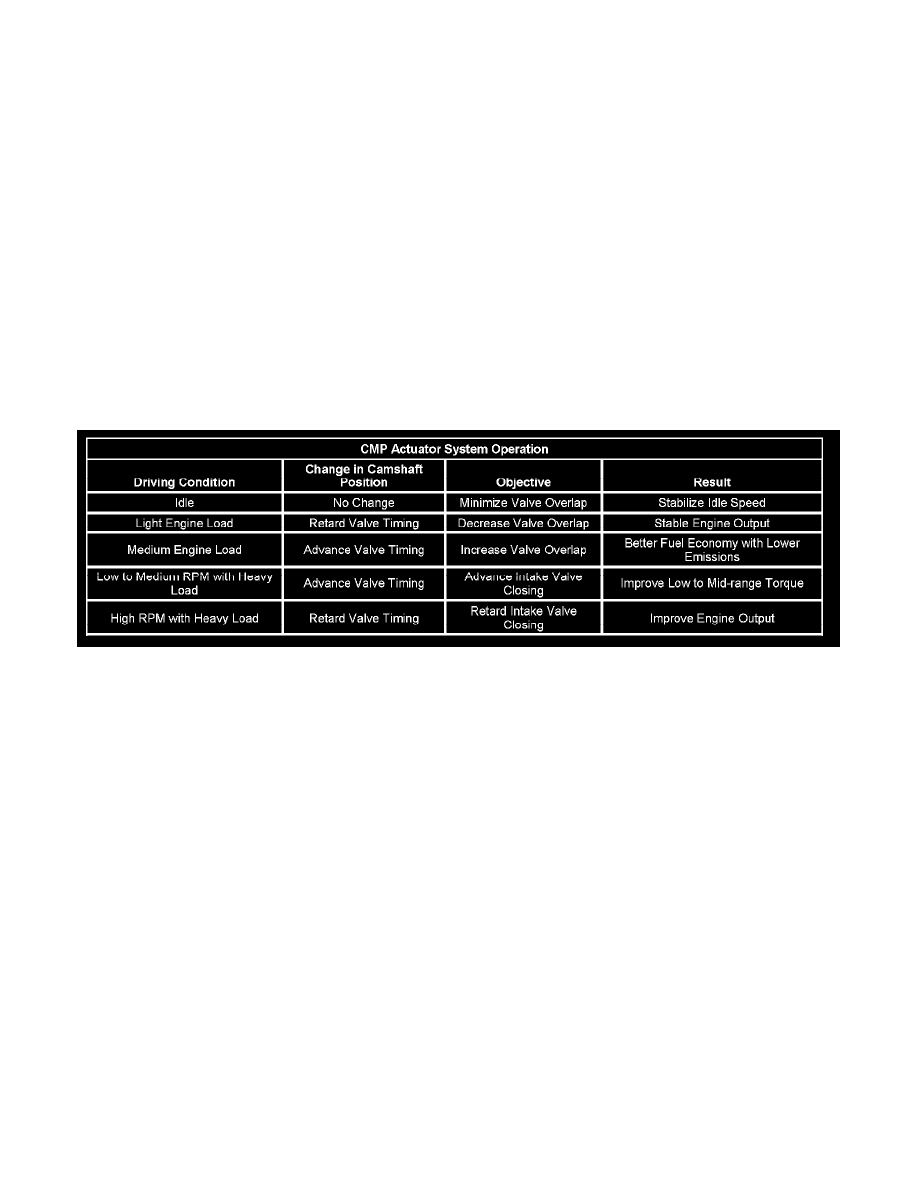Acadia FWD V6-3.6L (2007)

Variable Valve Timing Actuator: Description and Operation
CAMSHAFT ACTUATOR SYSTEM DESCRIPTION
The camshaft actuator system enables the engine control module (ECM) to change camshaft timing of all 4 camshafts while the engine is operating. The
camshaft position (CMP) actuator assembly varies the camshaft position in response to directional changes in oil pressure. The CMP actuator solenoid
valve controls the oil pressure that is applied to advance or retard a camshaft. Modifying camshaft timing under changing engine demand provides better
balance between the following performance concerns:
-
Engine power output
-
Fuel economy
-
Lower tailpipe emissions
The CMP actuator solenoid valve (7) is controlled by the ECM. The crankshaft position (CKP) sensor and the CMP sensors are used to monitor changes
in camshaft positions. The ECM uses the following information in order to calculate the desired camshaft positions:
-
The engine coolant temperature (ECT) sensor
-
The calculated engine oil temperature (EOT)
-
The mass air flow (MAF) sensor
-
The throttle position (TP) sensor
-
The vehicle speed sensor (VSS)
-
The volumetric efficiency
OPERATION
CMP Actuator System Operation
The camshaft position (CMP) actuator assembly has an outer housing that is driven by an engine timing chain. Inside the assembly is a rotor with fixed
vanes that is attached to the camshaft. Oil pressure that is applied to the fixed vanes will rotate a specific camshaft in relationship to the crankshaft.
The ECM operates the CMP actuator solenoid valve by pulse width modulation (PWM) of the solenoid coil. The higher the PWM duty cycle, the
larger the change in camshaft timing. The CMP actuator assembly also contains a lock pin that prevents movement between the outer housing and the
rotor vane assembly. The lock pin is released by oil pressure before any movement in the CMP actuator assembly takes place. The ECM is
continuously comparing CMP sensor inputs with crankshaft position (CKP) sensor input in order to monitor camshaft position and detect any system
malfunctions. If a condition exists in either the intake or exhaust camshaft actuator system, the opposite bank, intake or exhaust, camshaft actuator will
default to 0 crankshaft degrees.
